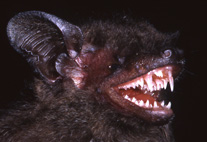Abstract
A member of the Sparidae family, the goldline sea bream Sarpa salpa (Linnaeus, 1758) collected from the Gulf of Tunis and the Bay of Bizerte in Northeast Tunisia, Western Mediterranean, were examined for the myxozoan parasites. During the parasitological exposure, a total of 7 myxosporean are found including 6 coelozoic species belong to the genus Ceratomyxa Thélohan, 1892 infected the gallbladder of their host of which 3 known species have been previously described, C. arcuata Thélohan, 1892, C. pallida Thélohan, 1895 and C. herouardi Georgévitch, 1916 and 3 species seem different in morphology to Ceratomyxa spp already known from Mediterranean Sea or from other localities in the wide world. These species are Ceratomyxa sp. 1, Ceratomyxa sp. 2 and Ceratomyxa sp. 3. Only one histozoic species belongs to the genus Henneguya Thélohan, 1892, Henneguya sp. identified for the first time infecting the mesentery vessels of S. salpa. The myxosporean parasite C. arcuata Thélohan, 1892 is reported for the first time in Tunisian waters from the goldline sea bream which represents as new host records. In addition to the Monoparasitism, the phenomenon of Polyparasitism was observed between the current species in both sampling sites with two types: Biparasitism and Triparasitism. The most frequent Polyparasitism was a Biparasitism-type between C. herouardi and C. pallida with frequency 16.97%. For all the species, no serious pathogenic changes have been recorded in the host organ or in the outward appearance of the fish. Morphological features, site of infection into the host, parasite prevalence and mean intensity of each myxosporean found during this survey are determined and their taxonomic affinities to other species are discussed.

